
Tundra
Aulavik National Park
Tundra health is one of two ecosystem indicators in the park. Parks Canada monitors tundra health using five different measures, and each of these provide insight into the functioning and the health of the ecosystem. This helps inform plans and decisions to keep the park healthy for the present and for the future.
Lemming monitoring
Parks Canada staff walk through plots in lemming habitat to look for their winter nests. Lemmings are the main prey source for a number of predators in the park, such as wolves, foxes, and various birds of prey. Lemmings build new winter nests each year and counting their nests gives us an idea of how healthy their populations are.
When the multi-year lemming cycle is low, so too are the numbers of those bird and mammal species which rely on lemmings as a primary food source.
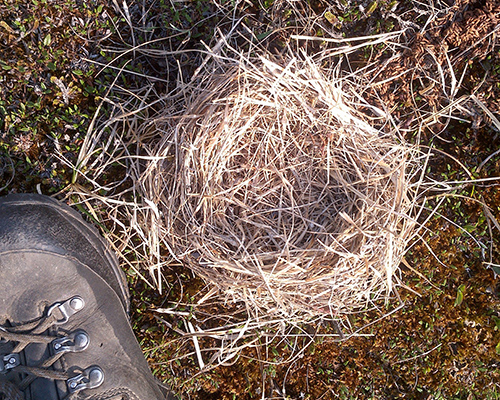
Vegetation change
Using satellite imagery, Parks Canada is in the process of implementing a vegetation monitoring program in Aulavik National Park. The intent of the program is to observe if plant communities are changing over time (e.g. if shrubs are increasing in area), and to determine if the start of the growing season (green-up) and the length of the growing season is changing over time. Warmer temperatures and a changing climate in the park are expected to impact vegetation, such as increased shrub growth and an earlier green-up occurring in spring.
Permafrost temperature
Permafrost refers to ground that remains below 0 °C for at least 2 consecutive years. Permafrost sensors monitor changes in permafrost temperatures (soil temperature) at various depths and locations throughout the park. This allows Parks Canada to observe how seasonal thaw and air temperatures impact permafrost, and determine if there is a significant decline in permafrost in the park.
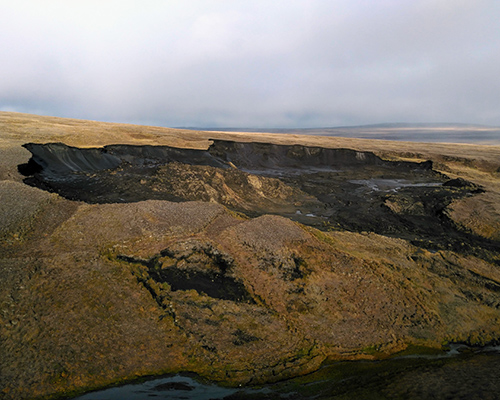
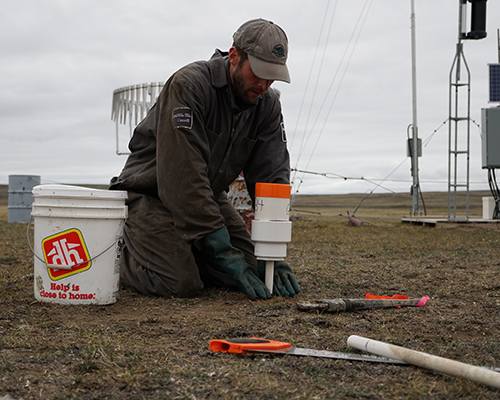
There are 3 permafrost loggers in Aulavik National Park, installed through collaboration with the Government of the Northwest Territories. The loggers are drilled 14 meters into the ground, and each logger has sensors at 1, 5, 10, and 14 meter depths. Data from each sensor is collected once every 2 years.
Banks Island muskox surveys
Parks Canada supports muskox herd surveys led by the Government of the Northwest Territories. The surveys happen every 5 years, and are completed by flying straight lines in 1 or 2 fixed wing aircrafts over Banks Island in mid-late summer.
The goal of this monitoring program is to evaluate the overall health of the muskox population in Aulavik National Park and greater Banks Island. This allows Parks Canada and the Government of the Northwest Territories to observe how many muskox are on Banks Island, and understand if the muskox population is growing or shrinking.
From this monitoring, we know the muskox population on Banks Island has been declining since a peak in 2001 of 68,585. A population estimate from 2019 suggests the muskox population on Banks Island is currently about 10,979.
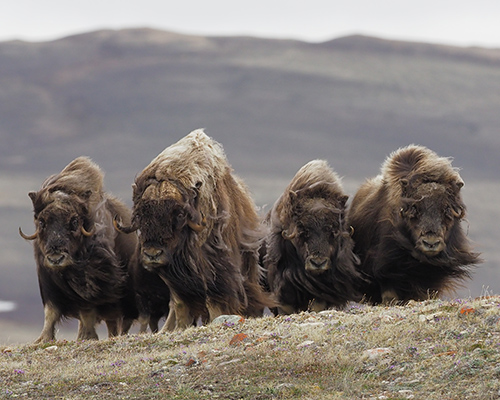
Banks Island Peary caribou surveys
Parks Canada supports Peary caribou herd surveys led by the Government of the Northwest Territories. The surveys happen every 5 years, and are completed by flying straight lines in 1 or 2 fixed wing aircrafts over Banks Island in mid-late summer.
The goal of this monitoring program is to evaluate the overall health of the Peary caribou population in Aulavik National Park and greater Banks Island. This allows Parks Canada and the Government of the Northwest Territories to observe how many caribou are on Banks Island, and understand if the caribou population is growing or shrinking.
A population estimate from 2019 suggests the caribou population on Banks Island is currently about 1,913.
Peary caribou were listed as endangered in 2004 by the Committee on the Status of Endangered Species of Wildlife in Canada (COSEWIC), and legally listed as endangered under the Federal Species at Risk Act in 2011. In 2015, Peary caribou were listed as threatened by COSEWIC, however, they are still legally listed as endangered.
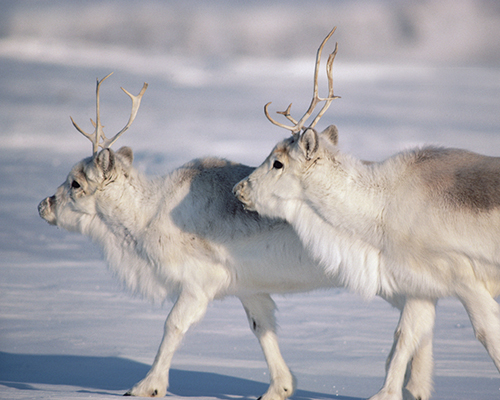
Related links
- Date modified :